Examples of MSc theses
In the list below you can read the descriptions of 11 very different theses, authored by students at the MSc Programme in Environmental Science. You are welcome to contact the author if you have further questions regarding a specific thesis.
Chronic toxicity of silver nanoparticles to Daphnia magna under different feeding conditions
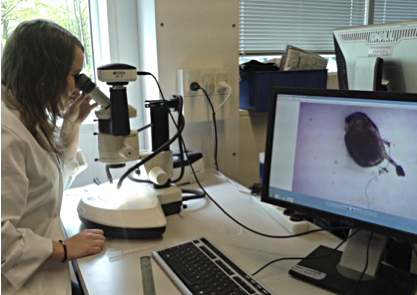
Author: Aiga Mackevica
Supervisor: Anders Baun, DTU Environment.
Ecotoxicity of nanoparticles has been an emerging issue in recent years, which is why it is necessary to evaluate the effects of nanoparticle exposure to the aquatic environment. In this study, we performed series of 21-day chronic tests with Daphnia magna exposed to silver nanoparticles to obtain information on growth and reproductive effects. The results were used for modelling to find possible modes of action of silver nanoparticle toxicity.
Determination of Steroid Hormones in Polar Bear Hair (Ursus maritimus) - a Methodology Study
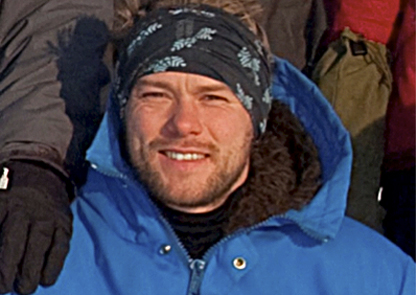
Author: Johan Weisser
Supervisors: Bjarne Styrishave, Erland Björklund & Martin Hansen; Department of Pharmacy, Faculty of Health and Medical Sciences, University of Copenhagen.
The aim of this thesis was to develop an analytical methodology to determine steroid hormones in hair, for the purpose of using hair as a biomarker to study endocrine imbalance in polar bears (Ursus maritimus). Hair was chosen because steroids are incorporated into the hair shaft while growing and thereby gives a prolonged steroid profile which reflect blood steroid concentration in that given time period. An extraction and clean up method was developed. For analyte determination both gas chromatography (GC) and liquid chromatography (LC) was tested followed by tandem mass spectrometry (MS/MS). It was possible to detect progestagens, androgens and estrogens using GC-MS/MS whereas LC-MS/MS is a better analytical technic for detecting corticosteroids. Hair steroid profiling may be used to assess stress in polar bears in response to pollution and climate changes.
Effects of Carbon Nanotubes on the Female Reproductive Axis: Interference with the female reproductive cycle. A Study in Mice.
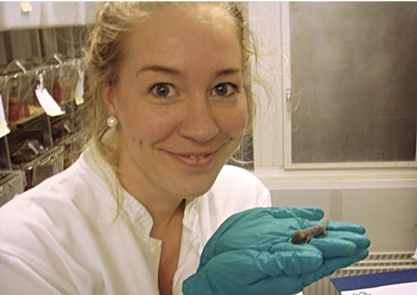
Author: Hanna Lilith Katarina Johansson
Supervisor: Karin Sørig Hougaard; National Research Centre for the Working Environment & University of Copenhagen
Very little is known on the effects of nanoparticles on reproductive function. Inhalation of nanoparticles induces inflammation in the lung – and inflammation interferes with the female reproductive axis. In this study, we investigated the effect of airway exposure to multi walled CNTs (MWCNTs) on the estrous cycle of female mice. The results showed that female reproduction may be susceptible to acute exposure to nanoparticles.
Fluorochemicals and antiandrogenic effects – an in vitro study of per- and polyfluorinated chemicals on steroidogenesis and androgen receptor activation
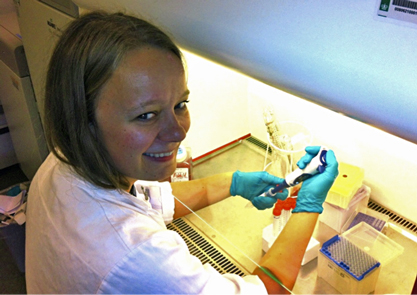
Author: Anna Kjerstine Rosenmai
Supervisor: Anne Marie Vinggaard; DTU Food.
Exposure to endocrine disrupting substances at the embryonic stage is suspected to have effects on the reproduction system in newborns and in young men. In this project we tested six fluorinated compounds, present in food wrapping (or degradation products of these), in two cell based test systems to investigate whether the compounds could induce an anti-androgenic effect, and in that way potentially affect male reproduction. During the project the student gained experience using cell-based assays, do immunoassays and work with qPCR. The results showed that three of the compounds reduced testosteron production in the cells.
Health effects of particulate air pollution measured by personal and indoor monitoring
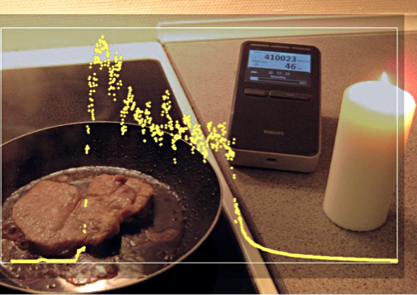
Author: Yulia Olsen
Supervisor: Steffen Loft; Faculty of Health and Medical Sciences, University of Copenhagen.
Combustion related nanoparticles are associated with health effects although the risks associated with especially indoor nanoparticles and exposure determinants are poorly described. In this study personal exposure to nanoparticles and home indoor levels of nanoparticles were assessed in human subjects. The health effects in terms of lung function, vascular function and inflammation were measured in the subjects and their spouses.
Influence of rice cultivation on water quality and the benthic macro-invertebrate community in the Mata Redonda lagoon in Guanacaste, Costa Rica
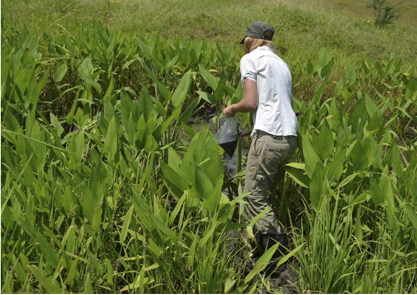
Author: Emilie Reiler
Supervisor: Nina Cedergreen; Department of Plant and Environmental Sciences, Faculty of Science, University of Copenhagen.
Pesticides are used to increase agricultural production. Unfortunately they can also spread to the environment damaging pristine ecosystems. This project investigated whether rice cultivation in Costa Rica lead to a decrease in the aquatic macroinvertebrate (small aquatic organisms) community downstream the cultivation site, potentially affecting the natural reserve Mata Redonda. Physical and chemical properties of the aquatic systems, the presence of pesticides in waters and sediment and the macroinvertebrate community at three different sites were investigated over an entire growth season. The results showed that pesticides were present even in the natural reserves and that the community deteriorated during the season with most pesticides present. Water quality was, however, generally bad, which also severely affected the composition of the community.
In vitro and ex vivo transport experiments of Fe3O4 and SiO2 nanoparticles performed on human skin and HaCaT keratinocyte cell line
Author: Katarina Staronova
Supervisor: Lisbeth Knudsen; Faculty of Health and Medical Sciences, University of Copenhagen.
This project formed part of a larger EU project called Nanotest. In the study we investigated whether the different nano-particles were able to penetrate human skin. The results showed that this was not the case. The MSc project resulted in the publication: Staroňová S, Nielsen JB, Roursgaard M, Knudsen LE: Transport of SiO2 nanoparticles through human skin. Basic and Clinical Pharmacology and Toxicology. 2012; 111:142-144
Linking crude oil biodegradation in temperate and arctic marine environments to associated water phase toxicity
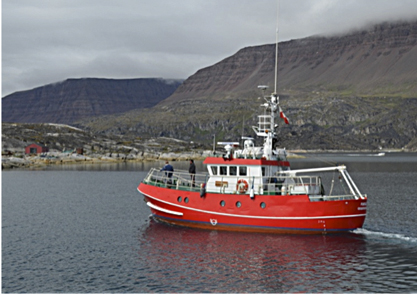
Author: Mette Kristensen
Supervisor: Jan H. Christensen; Department of Plant and Environmental Sciences, Faculty of Science, University of Copenhagen.
In this interdisciplinary master thesis, degradation of crude oil hydrocarbons incubated in sea water from either pristine Greenlandic waters or from heavily trafficked North Sea water was investigated and the toxicity of the degradation products tested. The hydrocarbons were measured by SPE - GC-MS and linked to changes in microbial and algal toxicity (assessed by Microtox Assay, Leucine incorporation, MPN enumeration and algae growth inhibition test). The degradation order and toxicity pattern showed distinct differences between the temperate and arctic marine environments and changed significantly over time.
Photochemical Air Purification
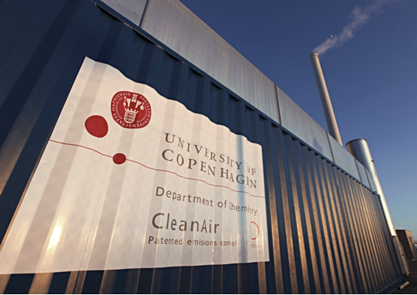
Author: Vitalijs Rodins
Supervisor: Matthew S. Johnson; Department of Chemistry, Faculty of Science, University of Copenhagen.
This thesis tested a new method for industrial emissions control using a new prototype built in a 40 foot standard shipping container. The prototype was connected to the chimney of a factory producing windmill blades, and was able to remove all of the styrene vapor being produced. In addition, the prototype was tested at Jysk Miljørens, a wastewater treatment plant in Aarhus harbor in Denmark. The conclusion is that photochemical air purification is a viable method for controlling both the smell and the volatile organic carbon (VOC) content of air pollution.
Presence of Antimicrobials & Resistance in Healthy Subjects from Greater Accra, Ghana
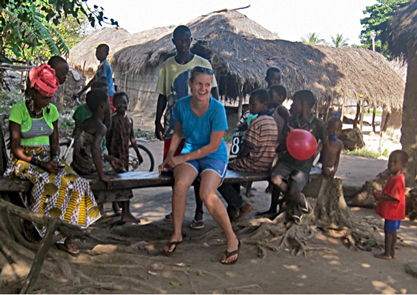
Authors: Sofie Trads og Sophie Hane-Weijman
Supervisor: Bjarne Styrishave; Department of Pharmacy, Faculty of Health and Medical Sciences, University of Copenhagen.
The aim of the project was to investigate the presence of antibiotics in urine of healthy Ghanaians not intentionally consuming antibiotics and to determine antibiotic resistance in coagulase-negative Staphylococcus (CoNS). In total, 95.2% of all CoNS isolates displayed resistance to at least one antibiotic, whereas 89 of the 120 samples (74.2%) showed the presence of at least one antibiotic in the urine although 100% of the participants had not knowingly consumed antibiotics. The samples with antibiotics were significantly more likely to also show the presence of resistant CoNS. Along with a significant relationship with the presence of resistant CoNS, the sub therapeutic concentrations of antibiotics may be contributing to resistance in the general population. It is therefore believed that Ghanaians may be consuming antibiotics from alternate sources, such as food, water and herbal medicines, promoting antibiotic resistance, with significant implications for public health.
Reductive dehalogenation of chlorinated solvents by an iron(0)-carbon composite

Author: Anders Bell
Supervisor: Hans Christian Bruun Hansen; Department of Plant and Environmental Sciences, Faculty of Science, University of Copenhagen.
Chlorinated solvents are among the most problematic and abundant soil and water contaminants as they percolate deep into small pores in aquifers and natural attenuation rates are slow. In this thesis focus has been on synthesis and use of iron(0) in combination with activated carbon for degradation of trichloroethylene (TCE). The reactive iron(0)-activated carbon sorbent was made by sintering nano-size iron(0) with activated carbon. This material was then use for lab experiments to study TCE bonding and degradation; GC-ECD was used to determine the products formed. While activated carbon sorbs TCE and brings aqueous concentrations down to low levels, iron(0) reduces TCE to less or non-toxic dehalogenated products. The new product has interesting perspectives for in-situ cleanup of polluted sites.
